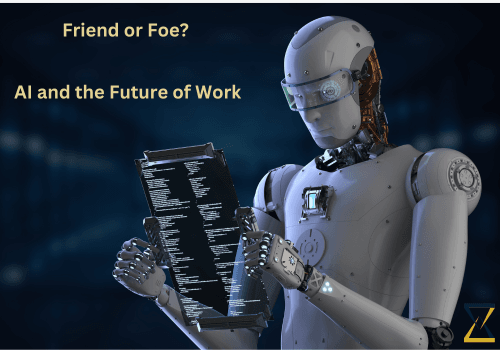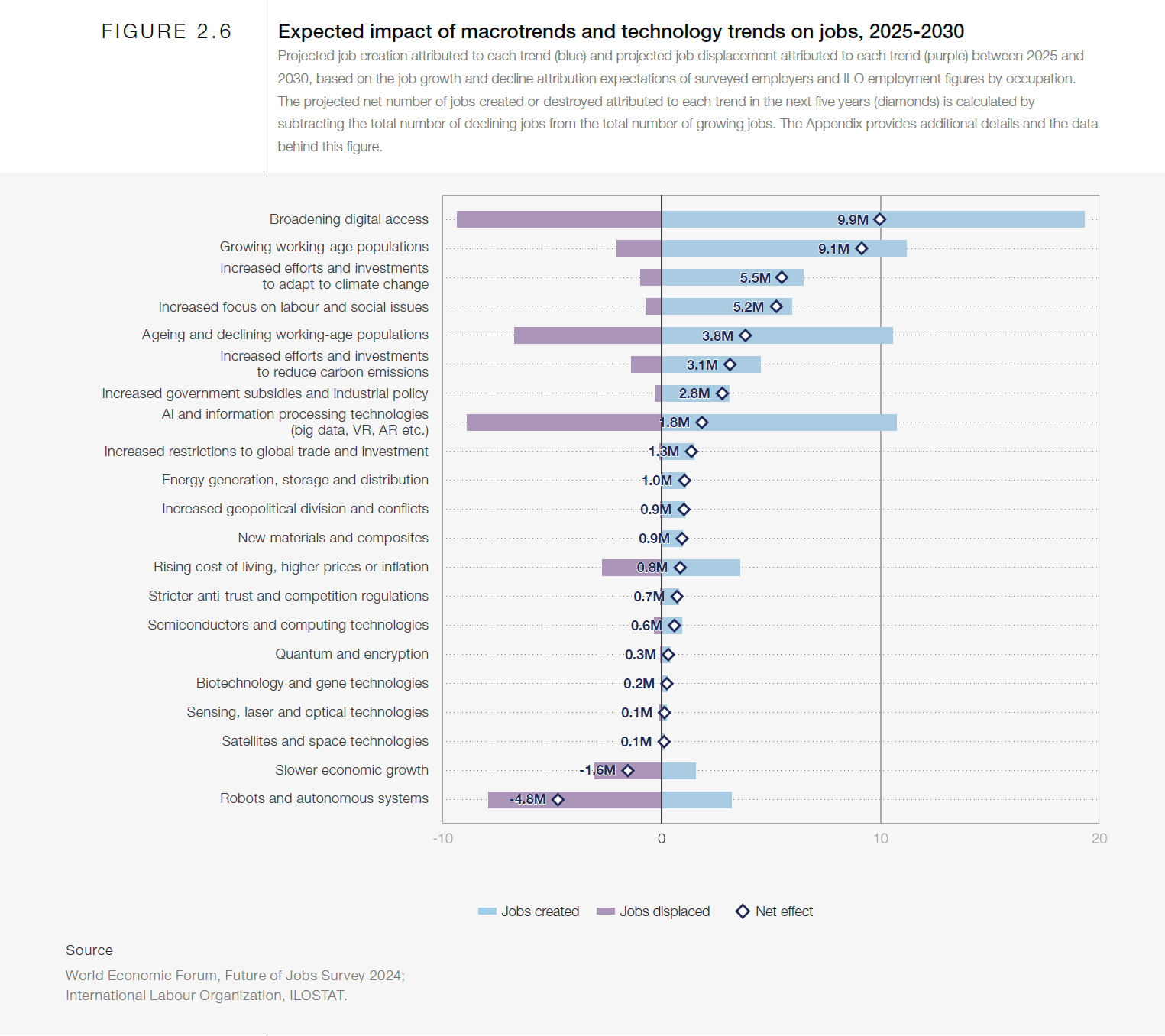
Amidst ongoing reports of layoffs and claims that AI is to blame, it’s no surprise that many people wonder if artificial intelligence (AI) powered machines or software will take their jobs.
What will the future of work be like? There’s reason for concern that AI will replace jobs in the future. But it’s not all bad news.
The truth is that both traditional AI and machine learning (ML), as well as generative AI technologies, will replace some of the roles or job functions that humans perform today.
As access to and adoption rates of AI technology grow and the technology advances, companies may be able to automate more types of tasks than in the past and do so more economically.
However, AI will also be responsible for many of the new jobs that will be created in the future. Already, new jobs related to building and using AI-powered technologies appear on job boards, and employers are seeking AI-literate employees. Plus, many AI applications still need a human coworker or ‘human in the loop’ for guidance and refinement.
Will AI replace you in the future? Maybe. But that’s not the only possible outcome.
Understanding these various outcomes will help you prepare now to take advantage of the opportunities presented by a future in which people and AI work together.
Here’s what the experts predict about the future of work and AI.
You may have to change careers because AI will replace or transform your current job.
According to the World Economic Forum (WEF) Future of Jobs Report 2025, a combination of factors called macro trends, including advances in AI and automation and declines in several industries, will result in the displacement of 92 million jobs by 2030. (That’s 8% of all current jobs, according to WEF’s calculations.)
The chart below presents the balance of jobs created and destroyed by each of several macro trends.

Source: World Economic Forum, The Future of Jobs Report 2025, https://reports.weforum.org/docs/WEF_Future_of_Jobs_Report_2025.pdf
You may notice that some trends, such as broadening digital access, AI and information processing technologies, robots and autonomous systems, and an aging population have big losses and gains.
These factors represent the greatest agents of change. People affected by the macrotrends may have to make “occupational shifts”–learning new skills and starting new careers to continue working.
The WEF estimates that 20 million people worldwide will have to make an occupational shift in the next five years because of broadening digital access and AI and information processing technologies.
In its report, Generative AI and the future of work in America, business intelligence firm McKinsey and Company estimates that nearly 24 million people worldwide will transition from declining industries to growth industries in the coming years.
In comparison, 8.6 million people in the US made occupational shifts during the pandemic.
These reports tell us that many people’s careers will be disrupted in the next five years. But they also point to trends that will fuel future growth.
Employers may replace some human workers with AI-powered alternatives
Some jobs lost to AI may be because employers reduce headcount as they bring AI-supported automations online. When the WEF surveyed employers in 2024 about their plans for dealing with AI, 41% of employers said they’d remove some workers whose jobs could be replicated by AI.
How many jobs can be automated using AI?
McKinsey & Co. estimates that about 30% of US workers’ hours and 27% of the hours worked by Europeans today could be automated by 2030 using a combination of technologies, including generative AI.
A report by the International Monetary Fund (IMF) says that 40% of jobs globally are “exposed” to AI, but the effects will be uneven.
In advanced economies, the exposure level is 60%. However, the IMF predicts that only half of the jobs exposed to AI will be negatively affected; the other half will benefit from the addition of AI to workflows.
For business owners and entrepreneurs, AI-powered automation may allow them to achieve more and reinvest those savings into expansion. Workers may be reassigned to higher-level work leading to better opportunities.
AI may become your assistant, not your replacement
More automated hours don’t always mean fewer employees.
When AI performs part of someone’s job, employers have options. They can replace people with AI to save money, reduce their employment needs, or take advantage of productivity gains to reassign workers to more complex or valuable tasks.
More than three-quarters (77%) of employers surveyed by WEF for the Future of Jobs Report 2025 said they would help their workforce learn to use new AI tools, and 47% planned to transition employees affected by AI to other roles within their organization.
Even when businesses don’t plan to expand, they may need to supplement their human workforce with automations that maximize everyone’s productivity or use AI to support employee upskilling and reskilling to address labor shortages.
Small business owners and entrepreneurs may use AI applications to perform administrative, marketing, or other tasks like creating social media posts that they previously handled on their own.
Preparing for the future of work with AI in it
AI is likely to influence many roles today and more in the future.
AI solutions are being developed to improve healthcare, design smart cities, and unlock the knowledge hidden in the world’s massive unstructured data repositories. A new generation of robotics tools will incorporate generative AI, enabling them to perform more complex tasks.
However, AI isn’t a complete replacement for human intelligence or physical skills.
Whether you plan to build a one-person company or work for a company with millions of employees worldwide, there will always be a need for human ingenuity. To prepare for the future, nurture your human skills such as communication, curiosity, and critical thinking.
What other skills will you need to thrive in the future?
